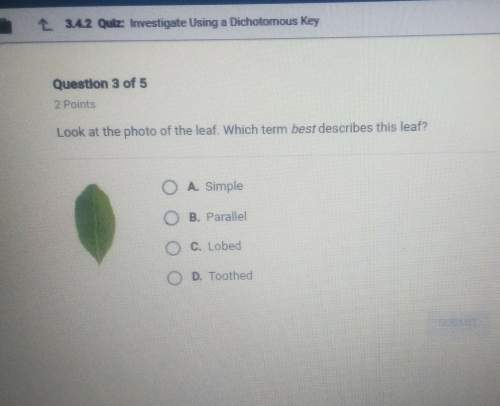
Biology, 20.11.2019 00:31 StephenCurry34
The burrowing owl is found in dry, open areas such as grasslands, prairies, savannas, deserts, farmlands, golf courses, and other urban areas throughout most of western united states and florida, central america, and most of south america. it makes its home in burrows of other animals and primarily eats insects and small rodents. as humans build more cities, nearby burrowing owl habitats change due to destruction of burrows and loss of prey. which is the least likely outcome of the habitat changes that are described?
the niche of the burrowing owl may change as it adapts to the changes.
the niche of the burrowing owl may change as it moves to a new habitat.
the population of the burrowing owl may be reduced or even become extinct. the population of the burrowing owl may increase in its new surroundings.

Answers: 1


Another question on Biology


Biology, 22.06.2019 02:00
Which blood cell spend most of their time in the lymphatic system?
Answers: 1

Biology, 22.06.2019 02:30
What is the surface temperature of the ocean where hurricanes form? greater than 80 celsius approximately 27 celsius at least 76 celsius less than 10.5 celsius
Answers: 1

Biology, 22.06.2019 11:30
There are multiple lines of evidence that provide support for common ancestry and evolution. write 3-4 paragraphs describing at least three of them in detail. provide at least one example for each line of evidence.
Answers: 1
You know the right answer?
The burrowing owl is found in dry, open areas such as grasslands, prairies, savannas, deserts, farml...
Questions

Mathematics, 25.06.2020 07:01

Computers and Technology, 25.06.2020 07:01





Mathematics, 25.06.2020 07:01





Mathematics, 25.06.2020 07:01

Mathematics, 25.06.2020 07:01











